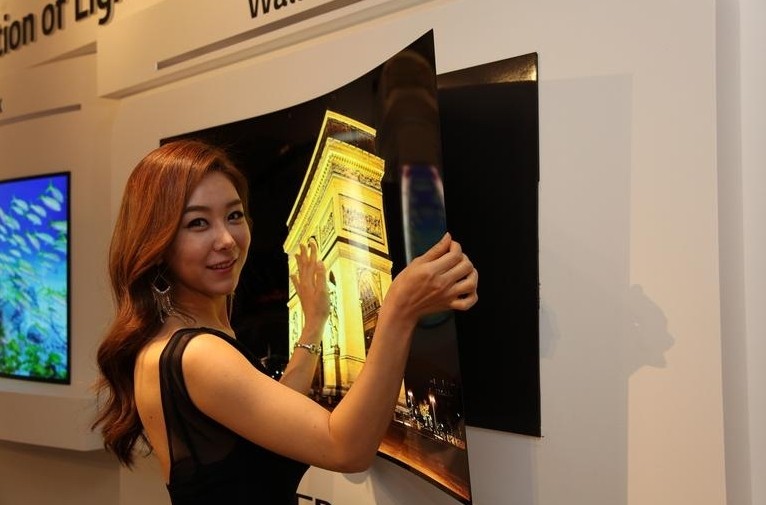
LG’s display arm recently showcased a detachable organic light-emitting diode (OLED) panel that’s thin and light enough to stick to a wall using just a magnetic mat.
The impossibly thin panel measures just 0.97mm (0.038 inches) thin and weighs only 1.9kg (4.18 pounds) despite the fact that it measures 55-inches diagonally. LG’s existing OLED panels are “thick” by comparison at 4.3mm which is thinner than the Oppo R5, the world’s slimmest smartphone at 4.85mm.
The “wallpaper” panel was just one highlight from LG Display’s recent press event in South Korea.
OLED panels are largely expected to be the next big thing in display technology. Unlike liquid crystal displays (LCDs), OLED panels don’t use a backlight unit as the organic material they utilize emit their own light. This allows the panels to be incredibly thin and flexible as you’ve no doubt seen on select high-end television sets and even some smartphones.
OLED technology isn’t cheap, however, which is one of the reasons adoption has been slow thus far. As CNET notes, OLED panels have a historically low yield rate, meaning a large number of panels that roll off the assembly line don’t pass quality control standards. As production techniques improve, waste will be reduced and the cost of ownership will come down.
Right now, an LG 65-inch, 4K OLED set will set you back a whopping $9,000 while its LED counterpart can be had for less than $2,000.
https://www.techspot.com/news/60729-lg-display-shows-off-press-wallpaper-tv-under.html